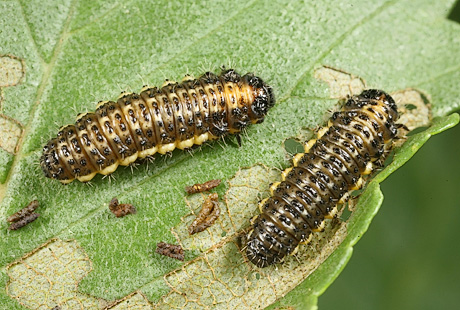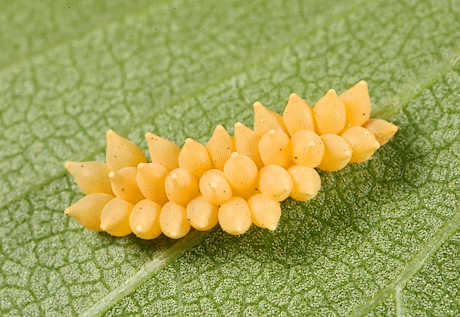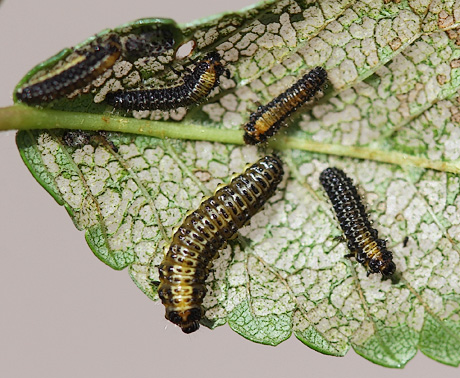
Elm Leaf Beetle
Damage caused by elm leaf beetles
Elm leaf beetles are serious pests of all elm trees. The adults eat small circular holes in the leaves. The larvae skeletonize leaves, eating the underside of the leaf while leaving the veins and upper surface. Heavy infestations will cause the leaves to brown, dry out and fall prematurely. The elm leaf beetle doesn't usually kill the elm tree, but it stresses the tree making it more susceptible to other pests, diseases and wind injury, and causes it to look unsightly. Sometimes elm leaf beetles become pests when they move into homes to overwinter.
 Clemson University - USDA Cooperative Extension Slide Series, Bugwood.org
Clemson University - USDA Cooperative Extension Slide Series, Bugwood.org
How to identify elm leaf beetles
The adult elm leaf beetle is 1/4" long, yellow or green color, and has a spot on the head, and dark stripes on the outer edge of the front wings. The larvae is about 1/2" long and usually black and yellow with rows of dots on the back an sides. The elm leaf beetle pupua are about 1/5" long and yellow-orange with black bristles. The eggs are yellow, laid in clusters on undersides of elm leaves
 Gyorgy Csoka, Hungary Forest Research Institute, Bugwood.org
Gyorgy Csoka, Hungary Forest Research Institute, Bugwood.org
Life cycle of the elm leaf beetle
Adult beetles overwinter in protected areas under debris, sometimes moving into buildings and homes. In the spring they become more active and move to the elm trees. When elm leaves appear they eat the leaves and mate. The female elm leaf beetle lays up to 800 eggs in small yellow football shaped masses during her lifetime. The grubs eat the underside of leaves for about 3 weeks, then pupate, usually at the base of an elm tree or in a crack in the bark. Adult elm leaf beetles emerge from the pupae after a couple weeks. The elm leaf beetle may have 2 or 3 generations in a single summer depending on the climate. In the fall the elm leaf beetles stop laying eggs and find a protected place to overwinter.
 Gyorgy Csoka, Hungary Forest Research Institute, Bugwood.org
Gyorgy Csoka, Hungary Forest Research Institute, Bugwood.org
How to control the elm leaf beetles
Elm Leaf beetle is easily controlled. Depending on the size and location of the Elm, many different controls including soil injections with systemic insecticides and trunk banding may be used.
 Whitney Cranshaw - Colorado State University, Bugwood.org
Whitney Cranshaw - Colorado State University, Bugwood.org
Other resources





